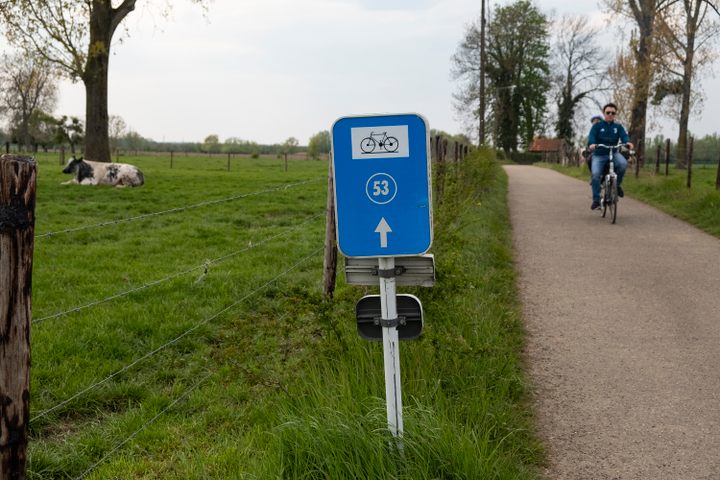
How Flanders Made Navigating a Cycling Paradise as Easy as Memorizing a Phone Number
To map out routes through stunning landscapes, riders rely on numerical “nodes.”
In Flanders, the best advice to give a disoriented cyclist is: Keep calm and check your crossbar. Many riders haul a string of numbers with them, preprinted or handwritten on a piece of paper. This jumble looks like a telephone number, but it’s really an itinerary: The numbers are a roadmap to the route.
Nearly 220 miles of cycling paths wind through the region in northern Belgium. The Flemish biking network is called fietsknooppunten, and it’s made up of knooppunten (Dutch for “nodes” or “points”), junctions where cycling paths intersect. Each path is numbered, and before setting out, cyclists can check an interactive map to create a sequence that’s unique to their route. Arrows point riders on their way across villages, forests, and fields. And as they pedal, cyclists flick their eyes to corresponding signs—rectangular and blue—and then back to their string of numbers to ensure they’re on the right track.
The junction network opened in 1990, after being devised by Belgian mining engineer Hugo Bollen. In the early 20th century, the region experienced an economic boom, particularly potent in the province of Limburg, which mined coal. But by the 1980s, those businesses started to close, and towns needed something else to rev their economic engines.
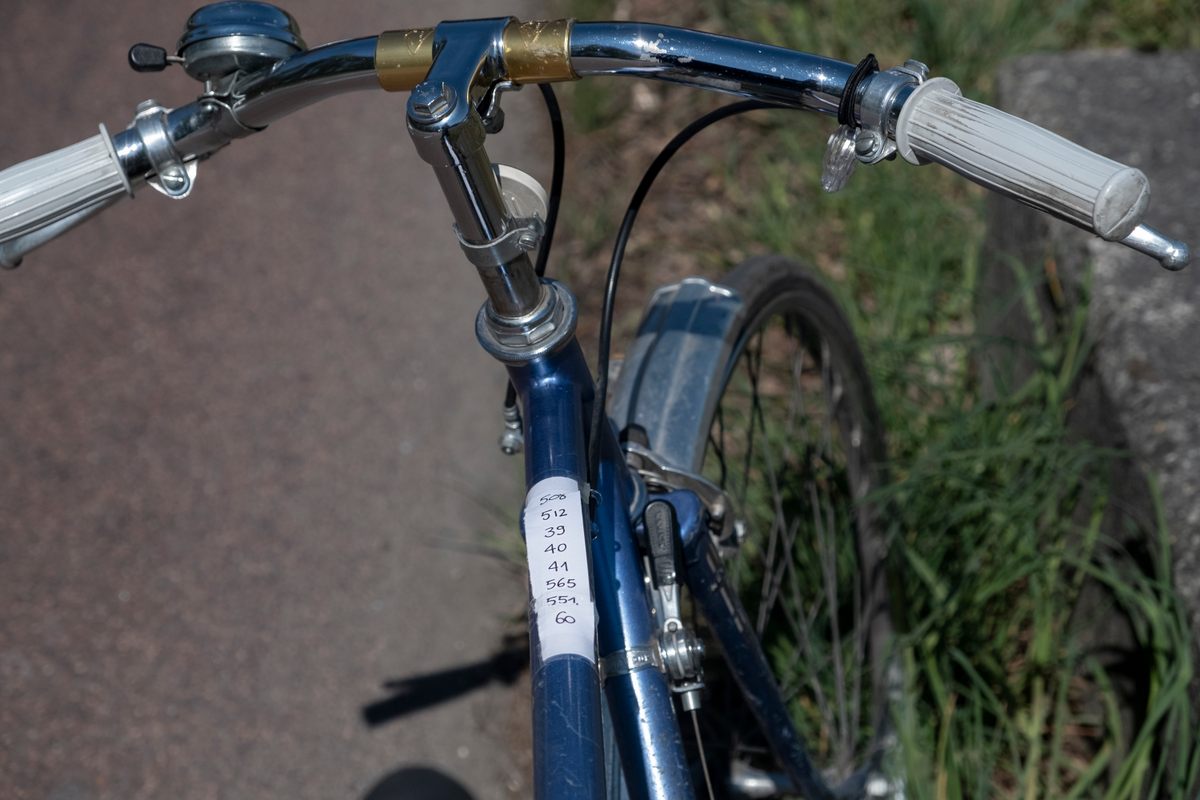
Bollen came up with an idea to stimulate tourism by leaning on another natural resource that was plentiful in the region: astonishing landscapes. He suggested a bike network—and because names of villages and towns could be hard to remember, especially if rattled off one after another, he opted for a system based on numbers. The nodes eventually inspired similar systems in the Netherlands and Croatia.
One appeal is that the routes are scenic detours—they’re organized around themes or designed to inspire, not necessarily meant to be the most efficient path from one destination to another. These paths celebrate the journey and the little gems along the way. Cyclists can choose to ride through strawberry fields, for instance, or around a Trappist monastery known for its superlative beer. History lovers can traverse trails that link up various sites of historic battles from both World Wars, particularly near the border with France. Scattered across Limburg, there are still traces of the region’s mining heritage, such as rusty narrow rails once used to transport coal carriages.

Over the years, the region’s tourism agency has added some new attractions along the route, while still highlighting nature and local ecosystems. In 2016, the tourism bureau bankrolled a pathway in the city of Bokrijk that bisects a pond, giving cyclists the impression of rushing through water. In 2019, a route opened in Bosland that sends cyclists breezing beneath the forest canopy, circling a cluster of coniferous trees in the Pijnven woods. These were planted in the early 20th century to supply the local mining industry with wood, but never razed—and riders now pass their trunks and branches while journeying along a path more than 30 feet in the air.
Buoyed by social media, these highly Instagrammable spots attract younger riders. “We’ve noticed more sporty cyclists on road bikes doing rides that combine the different bike attractions,” says Jan Pirard, biking project manager at the tourism office, Visit Limburg, and a cycling aficionado himself. Interested in knowing why people came to the area, volunteers from Visit Limburg surveyed over 5,000 riders, and found that the number one enticement was the richness of the landscape. A third project, not yet completed, will connect junctions 550 and 551, passing through the Hoge Kempen National Park, home to 7,000 species of plants and animals and landscapes including dunes, forests, and heaths.

The routes help cyclists savor the landscape, one numbered path at a time. It’s rare to hear a dinging bell signaling that another cyclist is about to pass; instead, the quiet is interspersed with the gentle sounds of pedals against the ground, wind rustling the trees, and birds chirping. You’ll lose yourself in shades of green, and the white of apple blossoms. Just be sure to fasten that slip of paper firmly to your crossbar, so it doesn’t flap away while you soak up the surroundings. Or take a cue from Kate Vandy, a cyclist from the U.K. who has enjoyed the network for years: “Now I scribble my series of numbers on my forearm, as a matter of convenience,” she says.
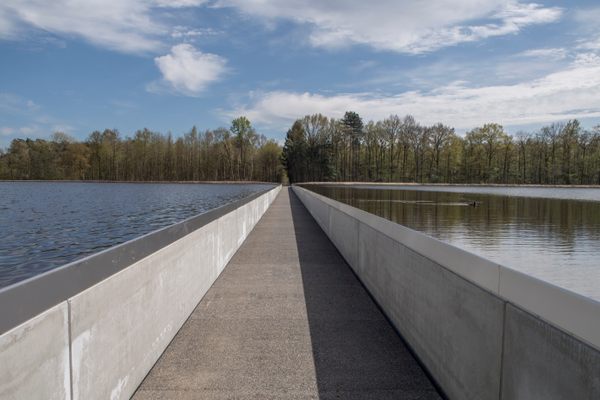

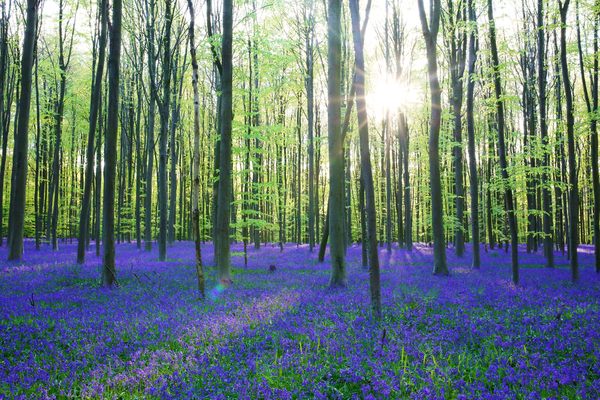


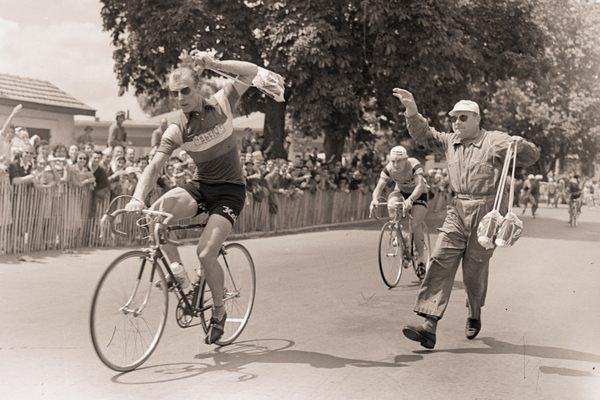







Follow us on Twitter to get the latest on the world's hidden wonders.
Like us on Facebook to get the latest on the world's hidden wonders.
Follow us on Twitter Like us on Facebook